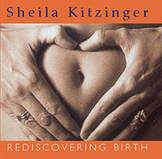 Childbirth is a universal experience, shared by women around the world since the world began. At the same time, it is a vastly different experience for women in different parts of the world, from the woman who delivers in a hospital room with a doctor in North America to the woman who crouches in a hut surrounded by a midwife and her female relatives in Africa. Every culture brings to birth their expectations of what should happen, what rituals and routines are normal. Yet that perception of “normal” also changes with changes in the culture; old customs and traditions are displaced by new ones that aren’t always better.
Childbirth is a universal experience, shared by women around the world since the world began. At the same time, it is a vastly different experience for women in different parts of the world, from the woman who delivers in a hospital room with a doctor in North America to the woman who crouches in a hut surrounded by a midwife and her female relatives in Africa. Every culture brings to birth their expectations of what should happen, what rituals and routines are normal. Yet that perception of “normal” also changes with changes in the culture; old customs and traditions are displaced by new ones that aren’t always better.
In her book Rediscovering Birth, anthropologist and birth activist Sheila Kitzinger examines childbirth and the traditions surrounding it. She takes us into the birth experiences of women around the globe, showing us how birth happens within different tribes and countries, and into the birth experiences of women in the past, showing us how birth has changed over the centuries. In doing so, Sheila challenges our perceptions of what birth is and should be.
For example, Sheila traces the changes within birthing culture in North America, from the days when Canada and the United States were being colonized until today. In the States, midwives were slowly banned from practicing by doctors, who believed that women “could not be trusted to think logically and make wise decisions.” Today, midwives still have to fight for the right to practice and women may find it hard to access midwife care in different states or provinces.
Chapters in Rediscovering Birth include “A Small Miracle” (a look at “quickening,” ultrasounds, and the woman’s feelings about her pregnancy), “The Journey to Birth” (customs and traditions during pregnancy), “Birth and Spirit” (spiritual elements and beliefs about birth), “The God-Sibs: Woman-to-Woman Help” (how women have traditionally supported each other during this time), “Midwives, The Birth Dance” (traditions of movement during birth), “Birth and Touch” (the important of touch during birth), and “Sanctuary and Renewal” (recovering after the birth). All the chapters are accompanied by beautiful pictures.
Sheila concludes Rediscovering Birth with a chapter comparing traditional, social ways of giving birth and modern, technological ways of giving birth. While not every traditional way is perfect (e.g., some tribes believe colustrum to be harmful to the baby and don’t allow the baby to drink it), not every modern innovation is perfect either. Sheila challenges women to think of birth within our social, cultural traditions; to consider why we do the things we do during birth; and to, hopefully, make the best choices for our own birth experiences.
Rediscovering Birth is a book that every woman should read during her pregnancy. Unfortunately, it is currently out of print, though available in libraries or second-hand. More information is also available on Sheila’s website..

2 Comments
The African hut you mentioned is more reminiscent of our North American birthing experience. Being intimately involved with the birth is incredible. I would have hated to miss the bonding experiences right from each kids first breaths.
I am a homebirth midwife. I too feel I have more in common with the African hut births than mainstream American birth practices!
I am just thankful most of my clients have clean running water!
“The Joyful Mysteries of Childbirth” mentions that Jesus Himself, was born very humbly, in a manger.
But why did God become man? To show us by His example how to reach heaven.
The very 1st thing He did, was to be born naturally, humbly, in a barn.
Why did God send His only begotten Son down to earth under those conditions?
Being God, His birth could be a scheduled C/S. He could have waited for technology to advance,
so He could be genetically modified to be the perfect person, then cloned, so every nation could have their own Jesus.
This book explains how it is possible to have a Christocentic pregnancy & birth, even in this culture.
It uses the outline of the Joyful Mysteries of the rosary, and Mary as our role model for pregnancy & birth.
the way God intended it to be. I highly recommend it for all Christian mothers.